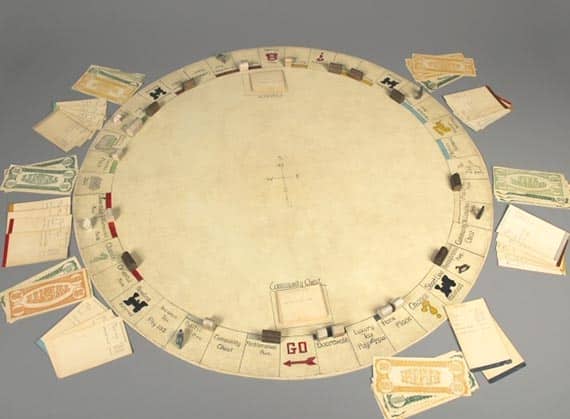If you are a human with a job and colleagues, your coworkers probably send you links to various items on the Internet. These may include the occasional funny cat video, but most of the time the content probably has a legitimate connection to your job. In my case, people send me numerous articles about preservation and, thankfully, most of it is good news. Recently, however, my colleagues have enjoyed witnessing my apparently comical, yet anguished, reactions to forwarded links with such headlines as “Museum Goer Smashes Priceless Artwork!” and “This Is Why You Don’t Touch Things at a Museum!” Most of these stories are accompanied by security footage showing a museum visitor reaching out, either innocently or with some malicious intent, to touch an artifact. Inevitably, the results are disastrous (otherwise, what would be the point?).
When you see this kind of story, you may wonder what the people who work in those museums are thinking. Sometimes, the articles mention creative forms of retribution taken by the assaulted museum, but in the absence of this, journalists and people who leave online comments are happy to offer their own admonishments. Surely—behind my own pained grimace—after I watch the artifacts crumble to pieces in viral video after viral video, I experience anger, frustration, or an internal voice shouting, “WHY would you do that?!” Well, dear reader, let me tell you what I’m thinking when I read about a museum guest who simply cannot resist touching what—according to the collective wisdom of the Internet—is the single category of things in the entire world that everyone should know and should understand on some basic biological level: you absolutely DO NOT TOUCH.
I’m thinking: I get it. And most of my colleagues in the museum field understand it too.
There are many reasons for wanting to touch museum artifacts. Putting aside malicious intent to destroy, which unfortunately does happen, very few of those reasons have anything to do with ignorance, self-centeredness, or a willful disregard for the rules. Sometimes, you simply want to feel a connection with an object. For example, a beautiful painting or the chair where an important person sat while doing an important thing elicits a response in the viewer. We want to feel connected to significant objects, and for many people, touch equals connection. At The Strong, I have worked with (and therefore touched) one of the world’s first jigsaw puzzles, the first Monopoly board created by Charles Darrow himself, and the original prototype for the iconic arcade game Asteroids. I will be the first to tell you that there is absolutely something powerful about physically connecting with these awe-inspiring objects. Sometimes, I have to pinch myself when I’m confronted with that opportunity. I can also tell you that being allowed to touch the objects is a commonly cited reason for going into museum work.

Another reason why people touch museum artifacts may be because they already feel a connection to the object. We see and hear this all the time at The Strong, since so many of the artifacts in the collections are items that museum guests either owned as children or currently own (to see examples, check out #ihadthat on the museum’s Facebook page). The connection that you feel with something that once was or is currently yours naturally prompts you to reach for it. After all, teddy bears are meant to be hugged, dolls are meant to have their hair brushed, and balls are meant to be bounced. These activities are simply what teddy bears, dolls, and balls are manufactured for. It can be difficult to remember that the teddy bear in front of you in the museum gallery is not just a teddy bear anymore; it is an artifact. It is a piece of historical record, a representation of a moment in time, and a learning opportunity for future generations. That teddy bear has important work to do, and we as its caretakers have accepted the responsibility of making sure that it is around to do that work for a very long time into the future.
I’m not here to give you a lesson on what might happen to that teddy bear and other artifacts in The Strong’s collections if people handled them constantly (however, if you would like to learn more about proper handling procedures for museum artifacts, click here for a very helpful short guide). We have all heard about the scary oils on our hands, and many of us have now seen videos of what happens when someone absentmindedly touches an artifact that seems stable and robust but simply is not. I’m here to say that I understand that touch is a natural human impulse, and I understand that sometimes touch is even necessary. If you have ever played an arcade or pinball game at The Strong, you have touched an artifact from the museum’s collections. At The Strong, we believe that sometimes actually interacting with museum artifacts is necessary to fully interpret and understand their affect on the history of play. The carousel and arcade games—from pinball to video games—fall into this category. The museum weighs this benefit against the possible harm for each and every game in its collection and, in some cases, the concern about harm wins, and the game must be displayed inside a case. For the majority of the other artifacts in the museum’s collections, the potential drawbacks to handling objects overwhelmingly outweigh the benefits of touch. This does not mean, however, that I do not understand that when you see a teddy bear, you want to touch its soft fur and give it a big hug. I get it. I know that when people touch objects in museums, it usually comes from a place of curiosity and admiration. I also know that it is these same feelings that compel people to go to a museum in the first place and to stand with hands tucked into their pockets and just … look.



